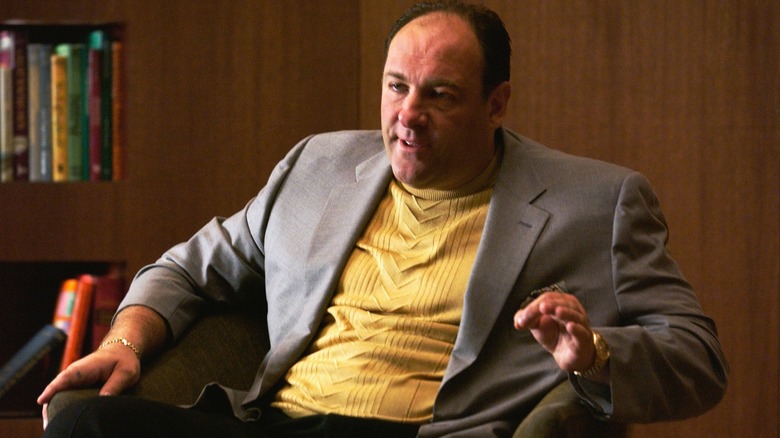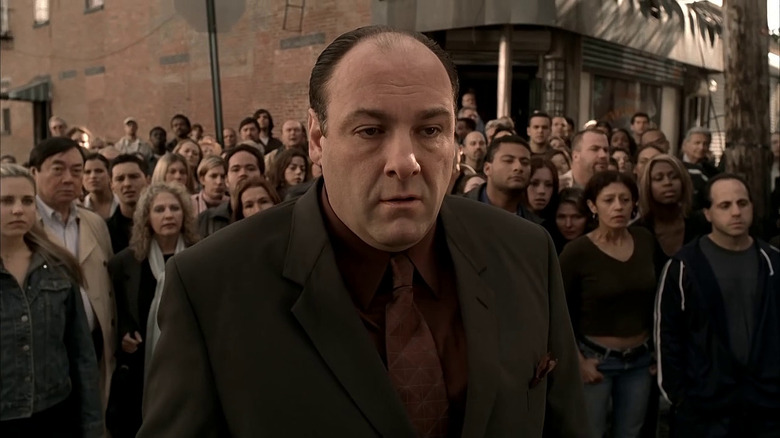David Chase Could (Literally) Write The Sopranos In His Sleep
The dream-like quality of "The Sopranos" has a simpler explanation than you might think. As the series delved into the Freudian subconscious of its protagonist, it also explored the unconscious mind of its creator, David Chase. Chase is known for writing and producing the smash hit HBO series that changed television forever.
For those who (somehow) haven't heard of it, "The Sopranos" is about a mafioso born into a life of crime living in suburban New Jersey. As the modern world evolves, 'this thing of ours' must learn to adapt or perish. Tony Soprano, played by the late actor James Gandolfini, finds himself in a crisis of ethics when his panic attacks begin to threaten his livelihood, forcing him to seek treatment from a psychiatrist. In order to truly get help, he must open up about his work and his feelings to a total stranger, two things he had always been told not to do. Through his sessions with Dr. Melfi (Lorraine Bracco), Tony reluctantly dusts off the cobwebs in corners of his mind that he never dared to examine.
Given the themes of Freudian psychoanalysis, the series often delves directly into Tony's inner world. This culminates in a number of dream sequences that provide the show with an almost Lynchian flair. As it turns out, the series creator was never far from dreams himself.
He preferred his own mind to the writers' room
There are a number of extensive dream sequences throughout "The Sopranos," including an episode where Tony ends up in a coma, "Join the Club." The mafioso's unconscious mind weaves a parallel narrative for himself that questions his identity and follows the erratic logic of dreams. This feverish episode is one of twenty-four in the series that Chase wrote himself. Many of the others authored by "The Sopranos" creator include similarly surreal plotlines, including "The Test Dream," which features a twenty-one minute dream sequence. "The major theme in the dream is Tony's impotence to do what he has to do," Chase told The New York Times. The series undoubtedly thrives in a dream state that allows it to reflect on itself.
It should come as no surprise, then, that the ideas for episodes would often come to "The Sopranos" creator in his sleep. Executive producer and co-writer Terence Winter claims that Chase would often nap through his pitches. "We would just quietly leave the room and allow him to sleep," he told Vanity Fair. Chase himself referred to the writers' room meetings as "long, drawn-out bulls*** sessions." Eventually after dozing off — or appearing to — Chase would spring to his feet and "just start writing on the board," Winter said.
"Sometimes I'd be pitching, and I'd go on and on, and I'd look over, and David would be sleeping. And then we would just quietly leave the room and allow him to sleep. Sometimes he wasn't sleeping, though—he just had his eyes closed and you thought he was sleeping. It was magic. He'd say, "O.K., I think I got it." He would get up and he would just start writing on the board: Scene One, Two, Three, Four, Five."
Despite appearances, the cynical "Sopranos" creator is no harsher on the other writers than he is on himself. He admits that he would start to "bulls***... as soon as anybody." Ultimately all this "bulls***" produced the most revolutionary show in the history of television. Chase's reluctant and sleepy approach to writing provided "The Sopranos" with the rugged masculinity and dreamy surrealism that made it so unique.

